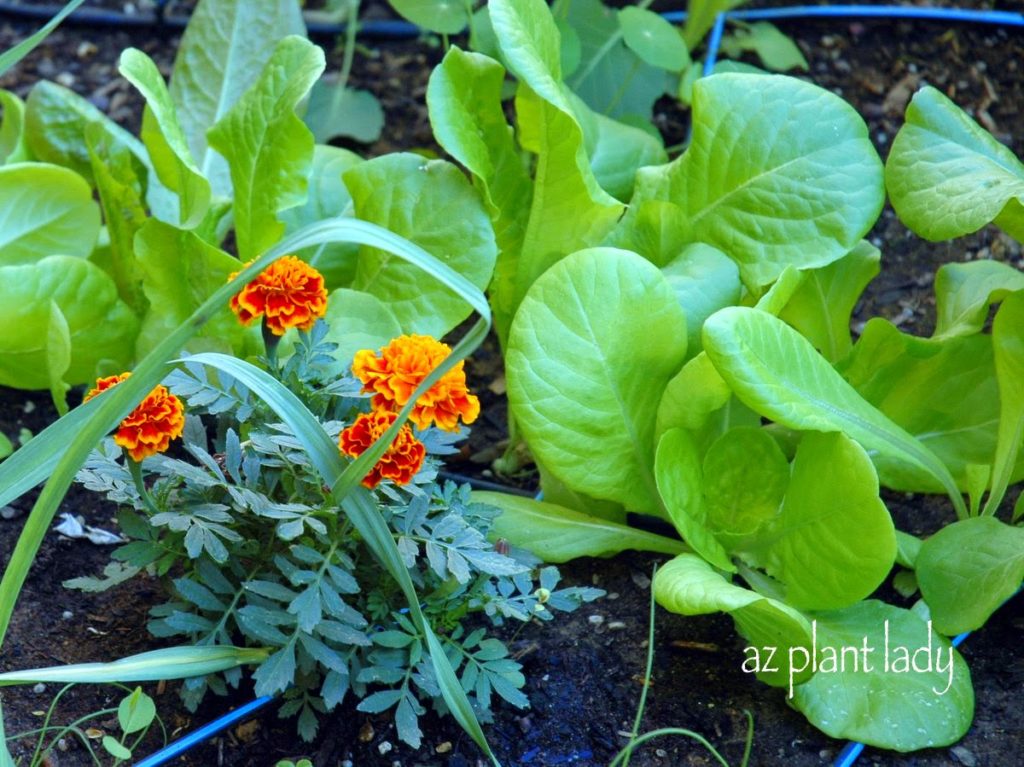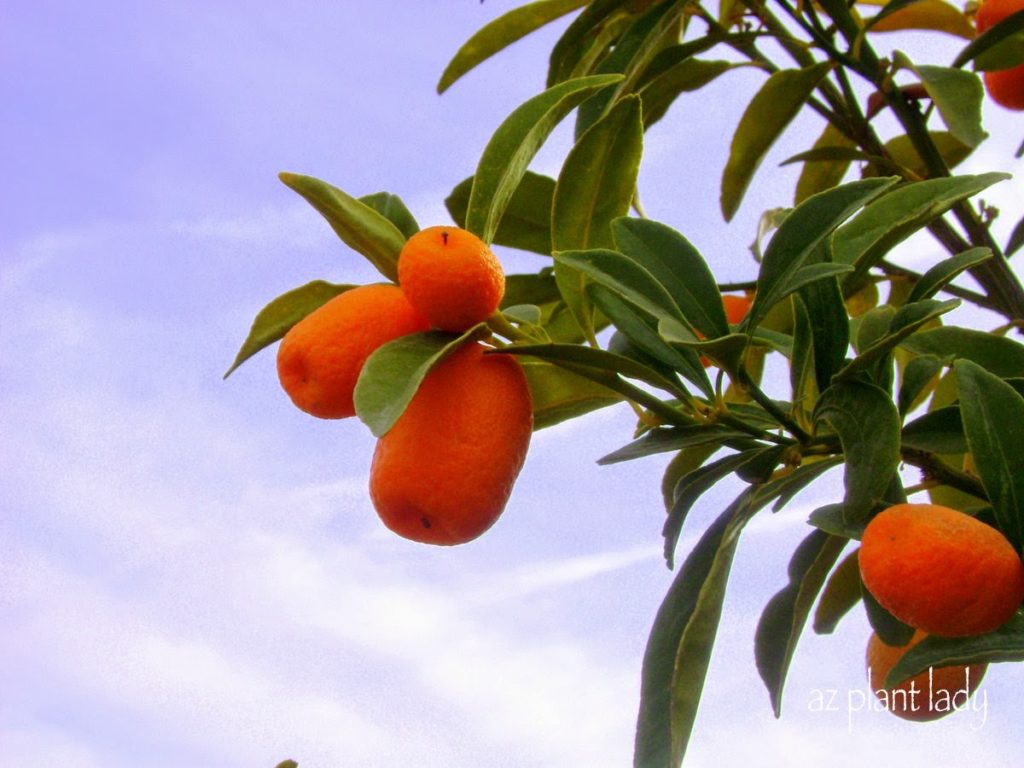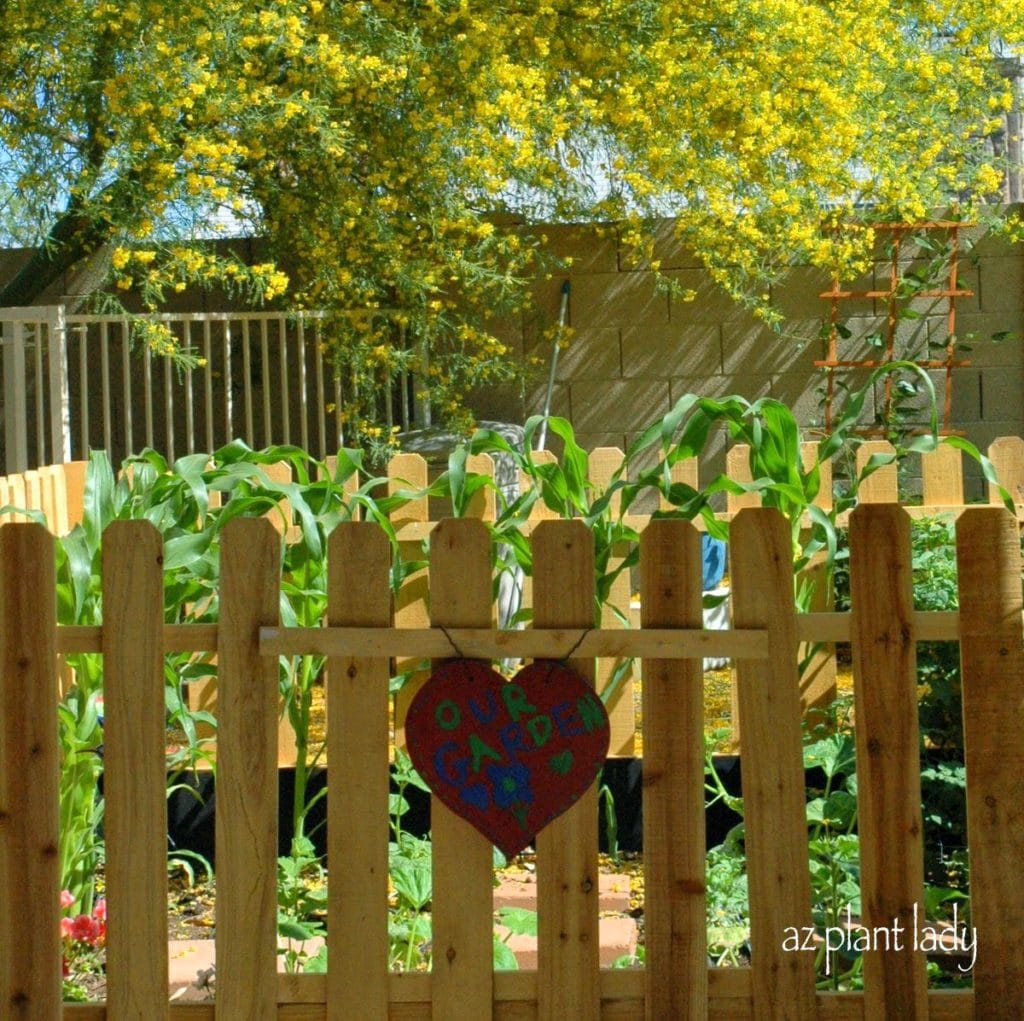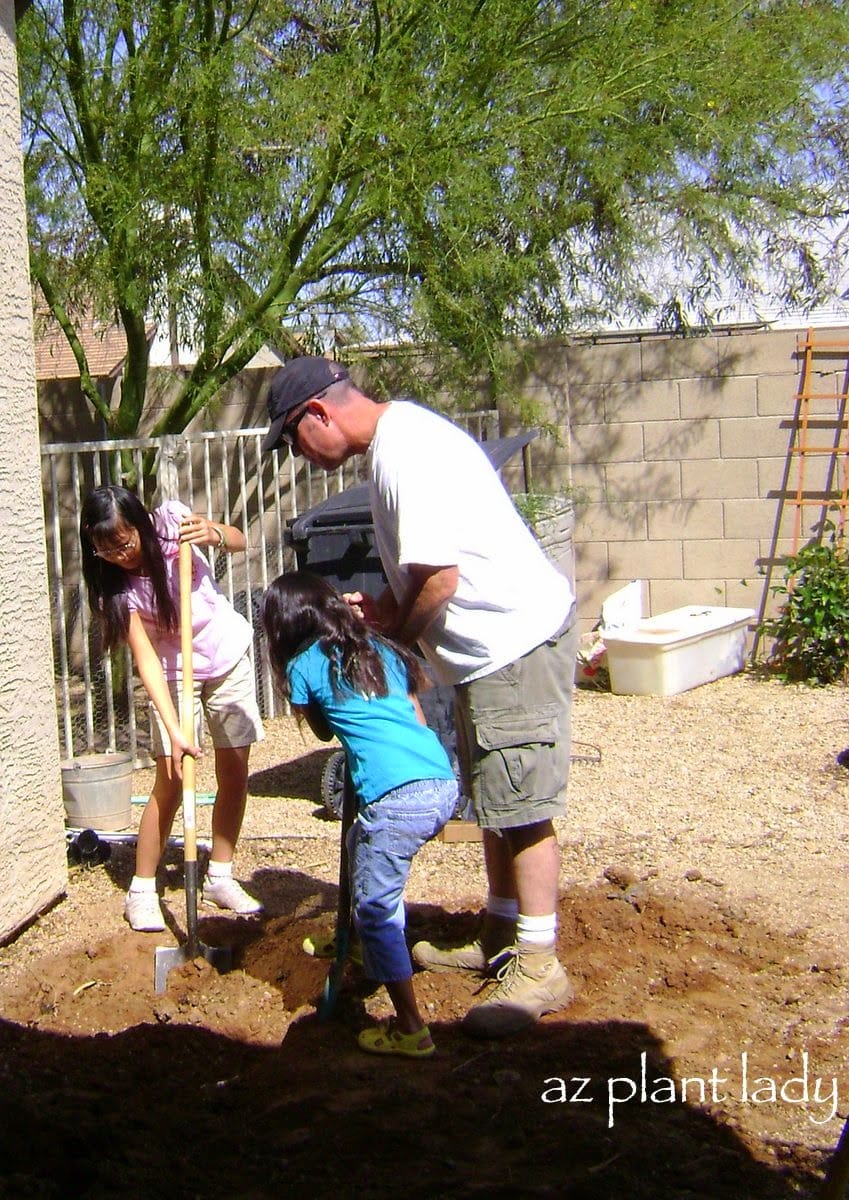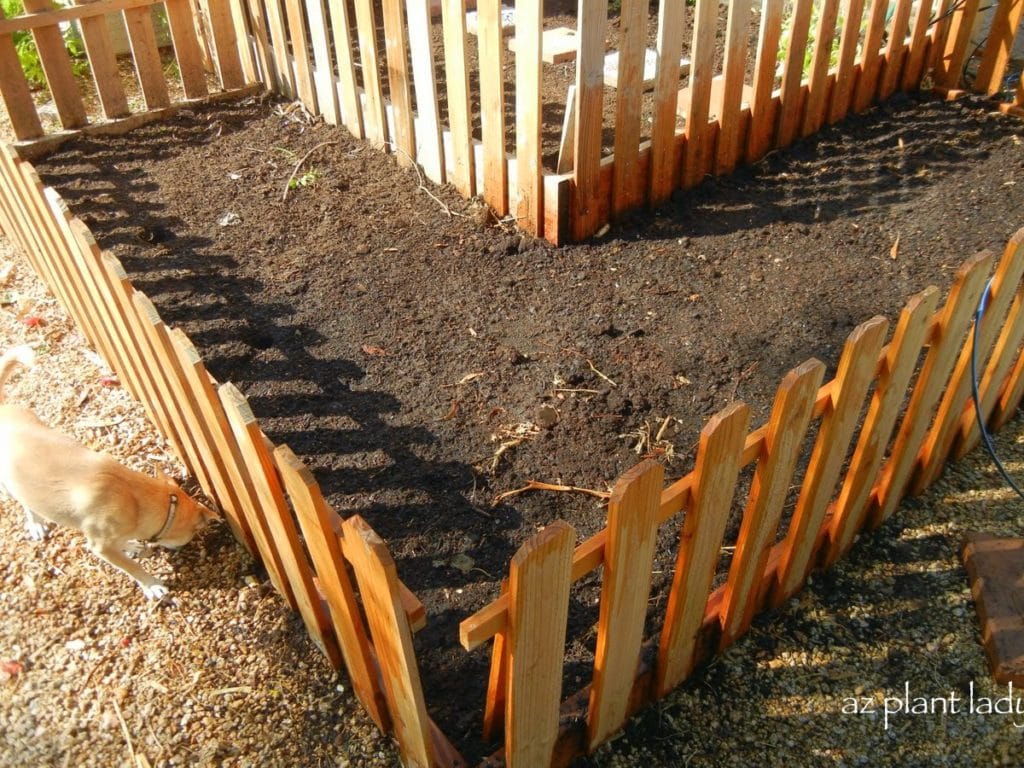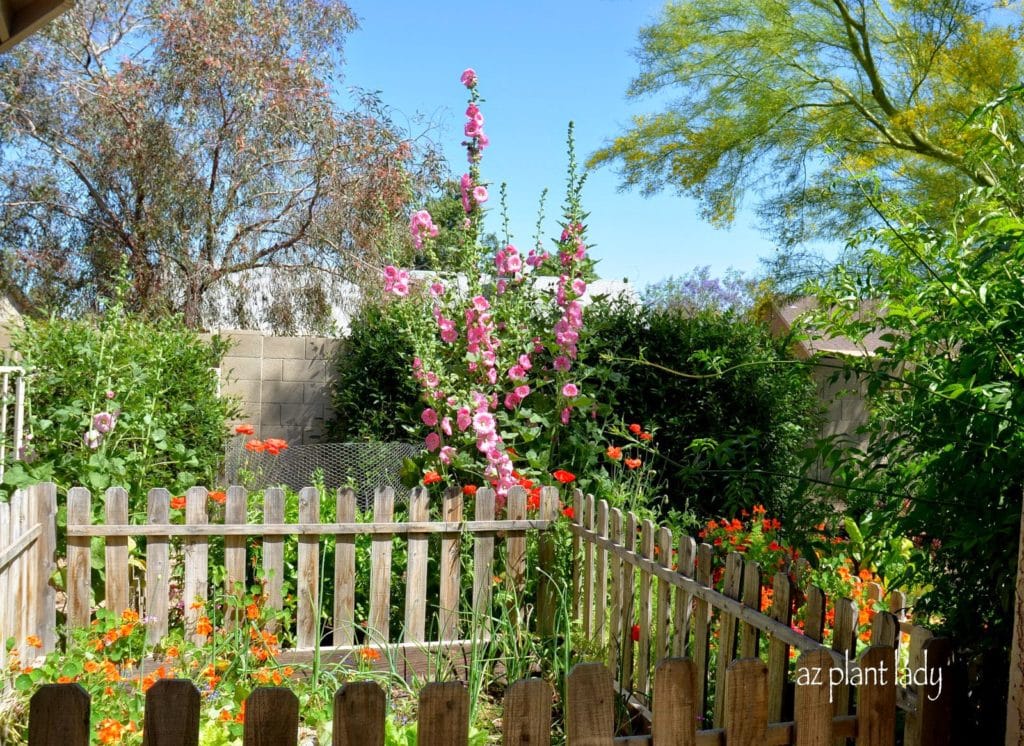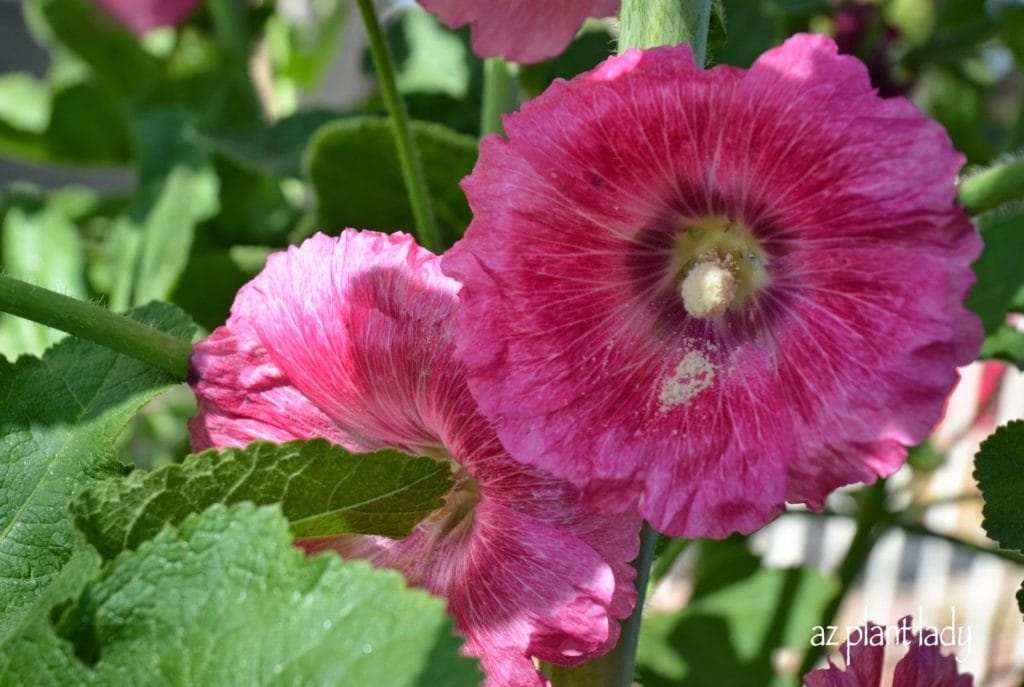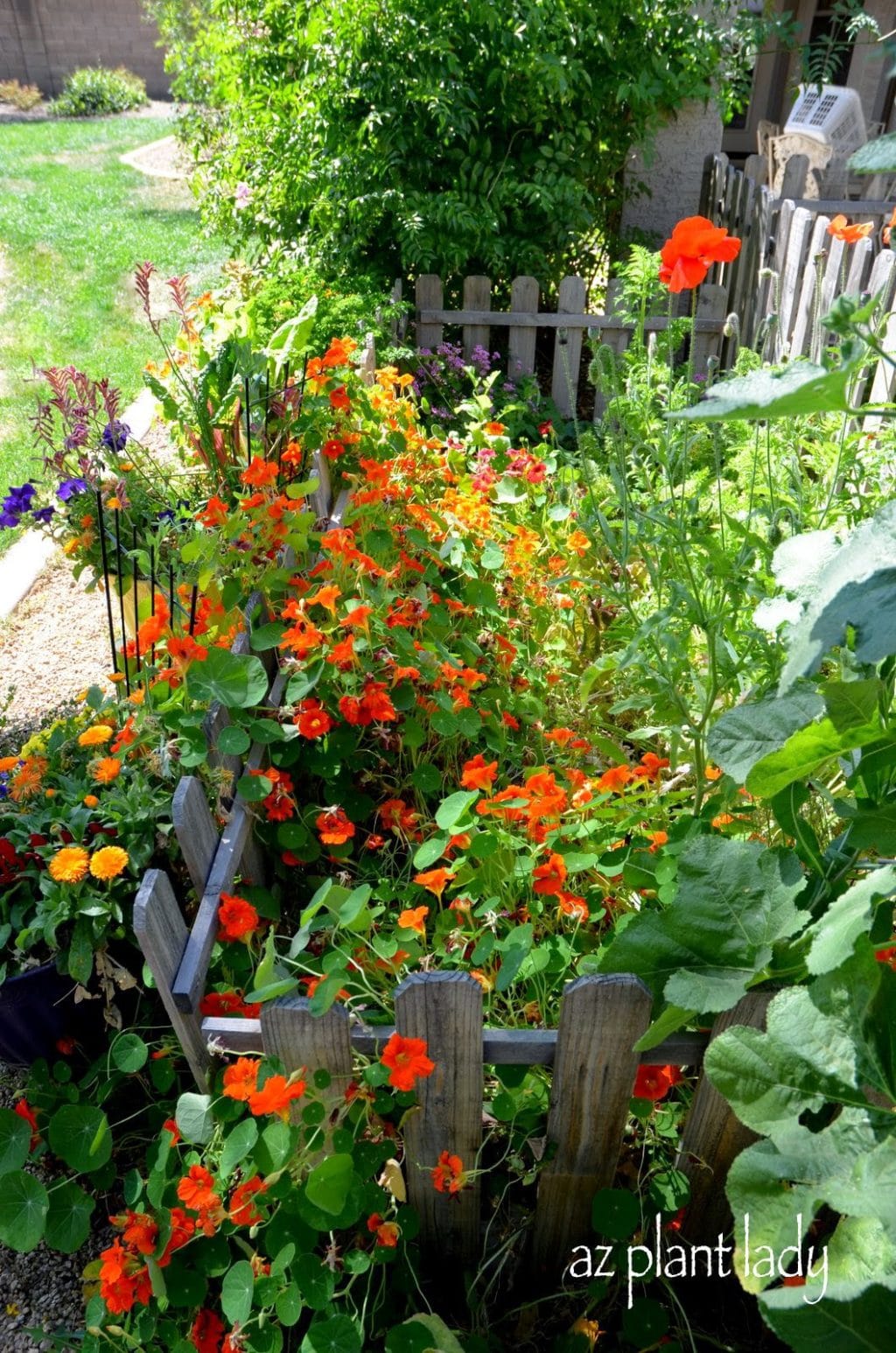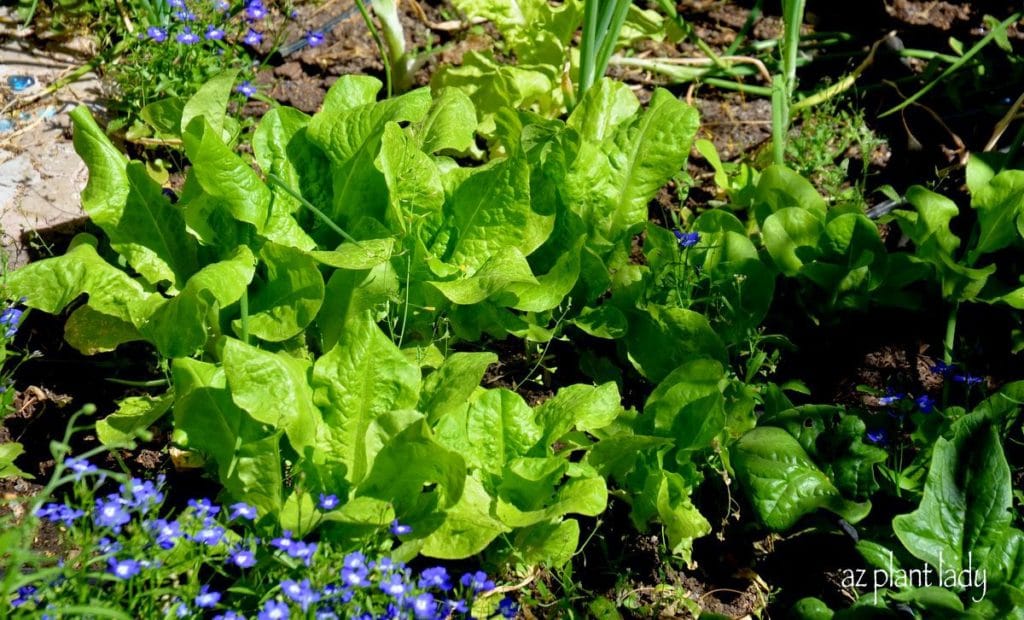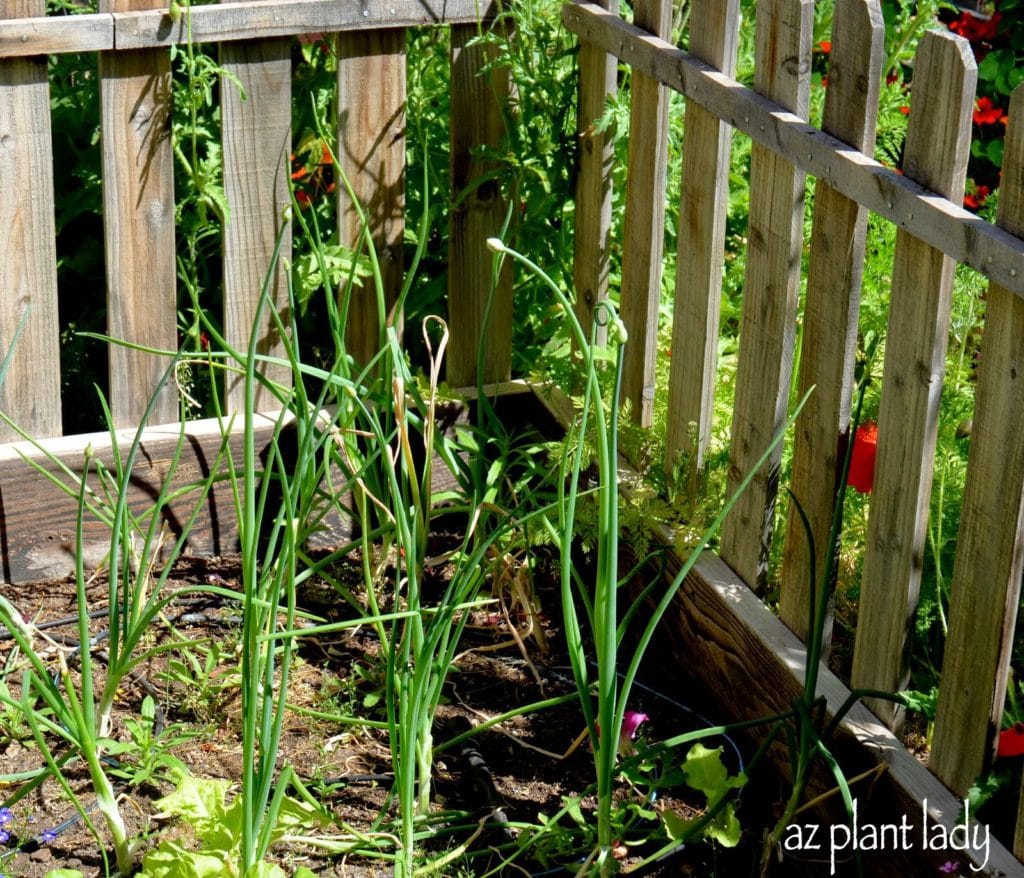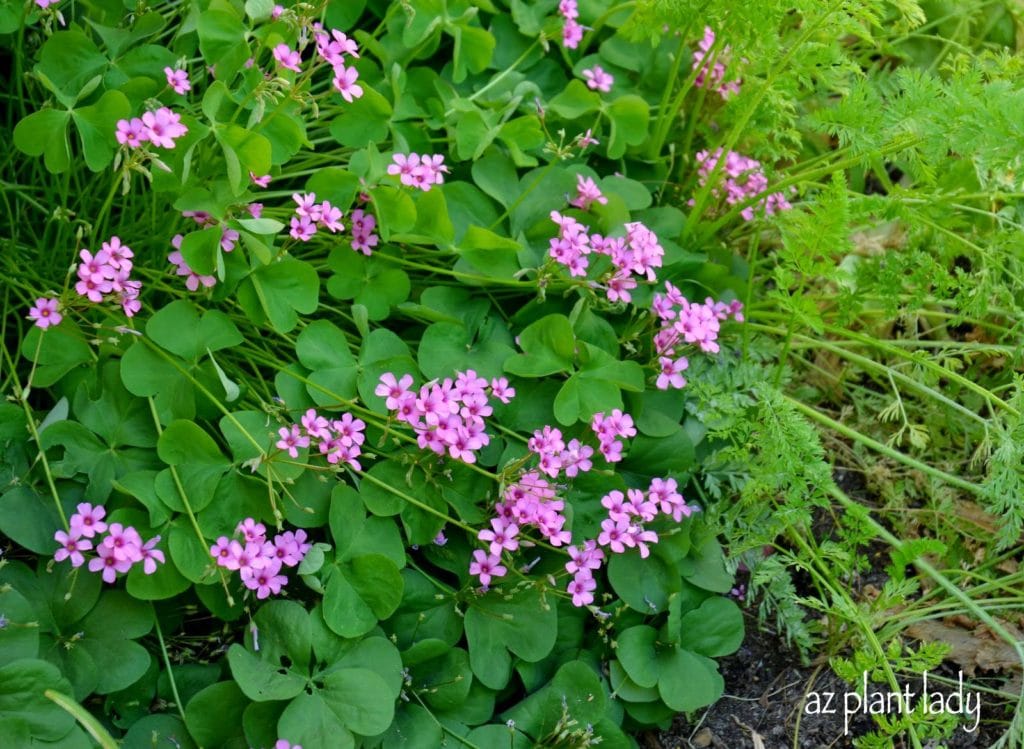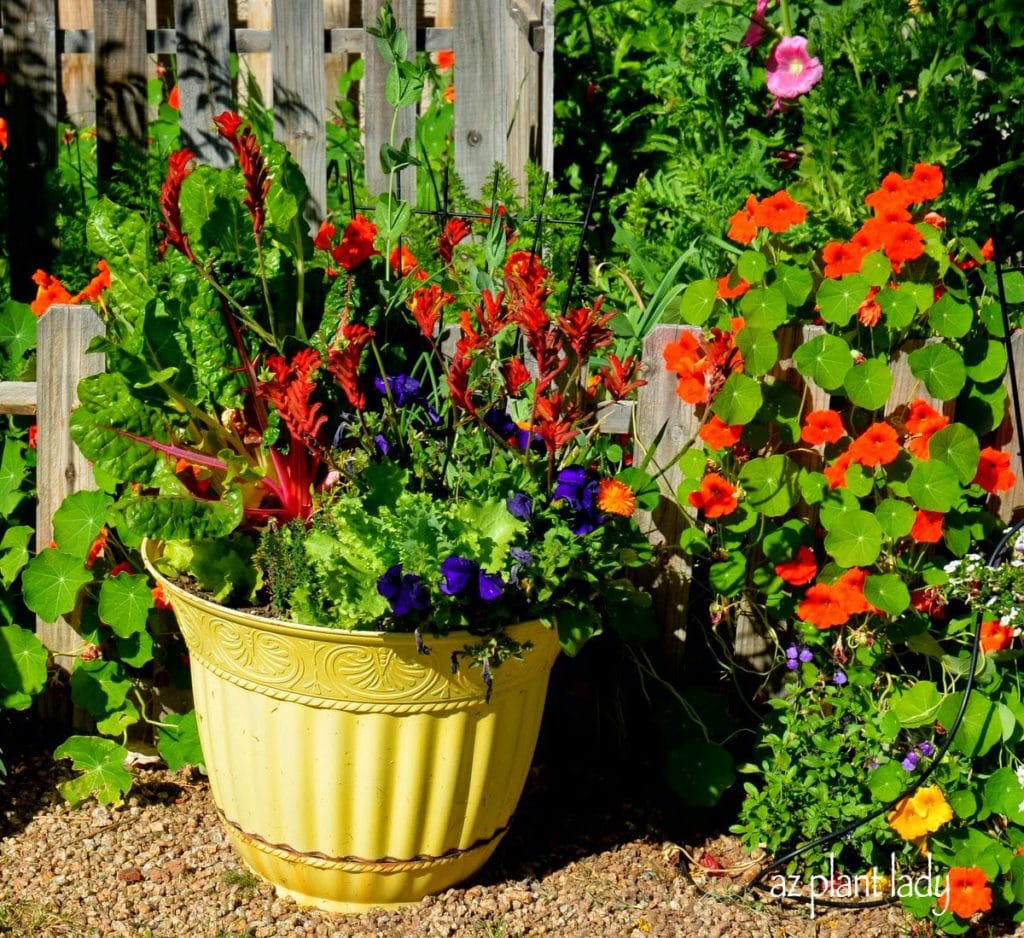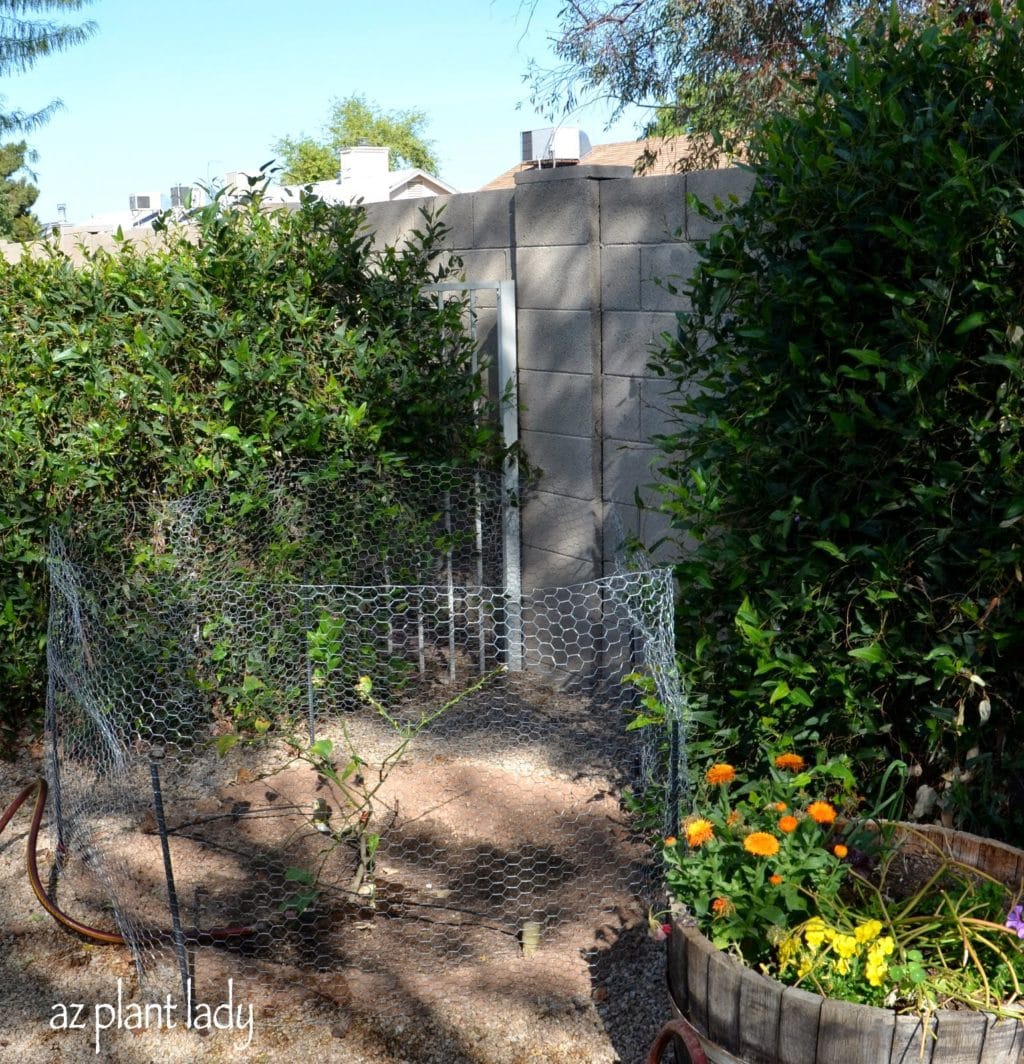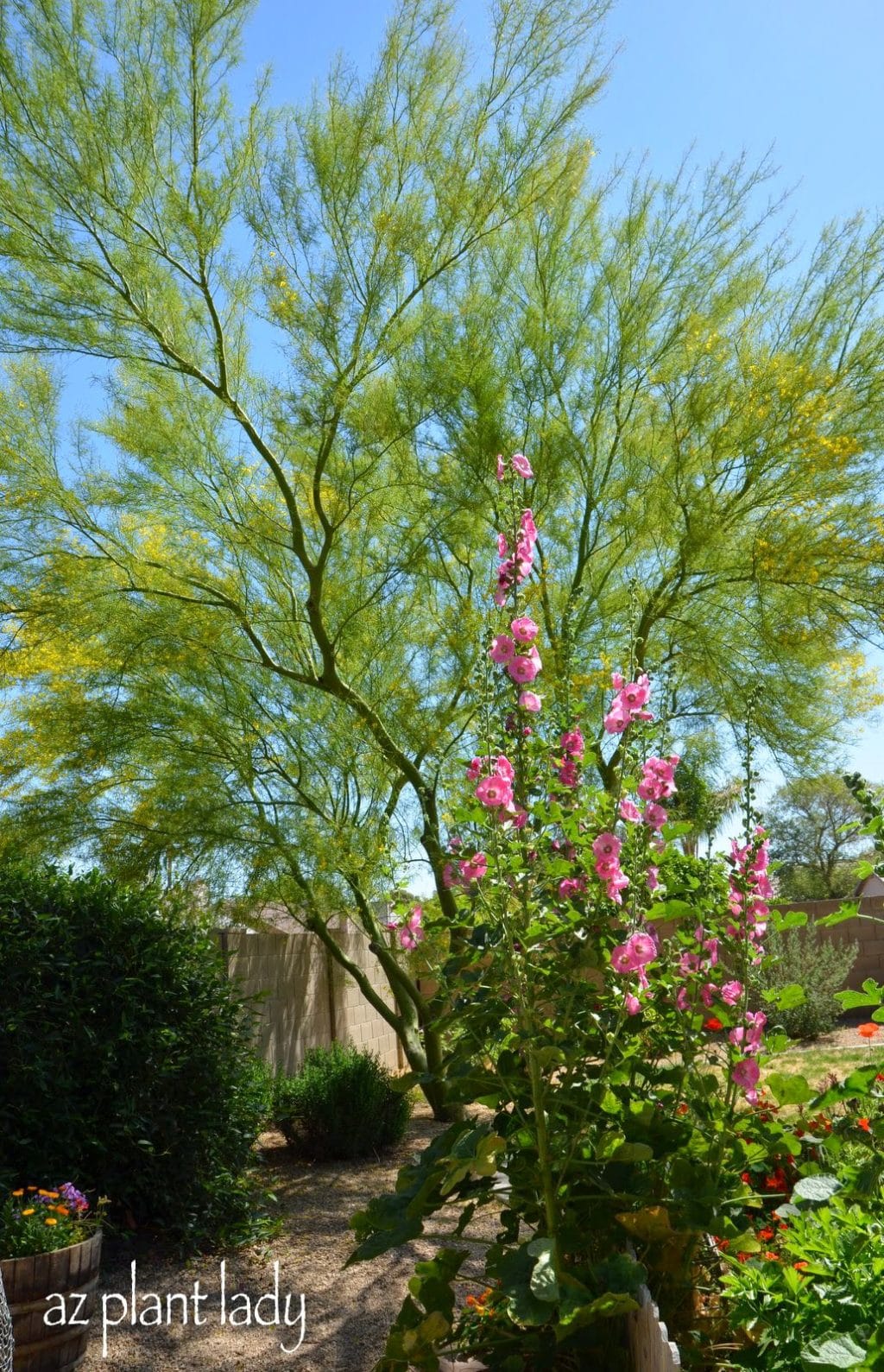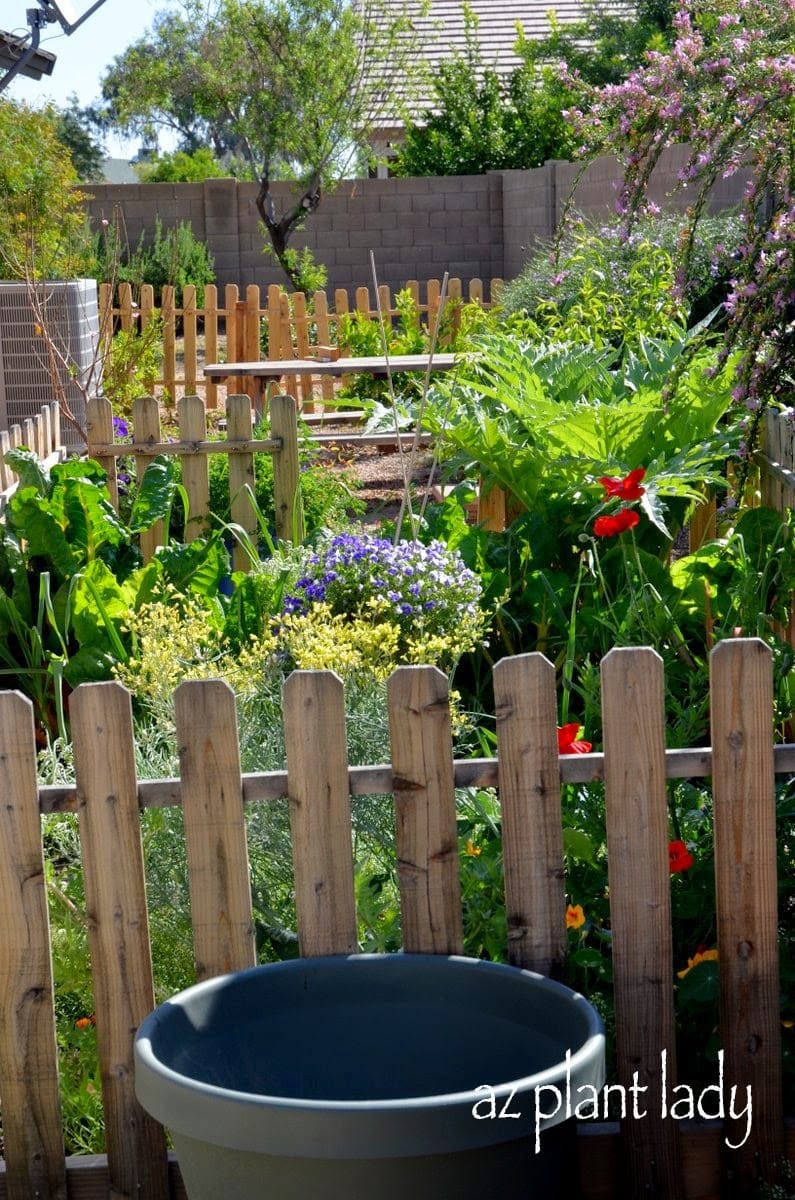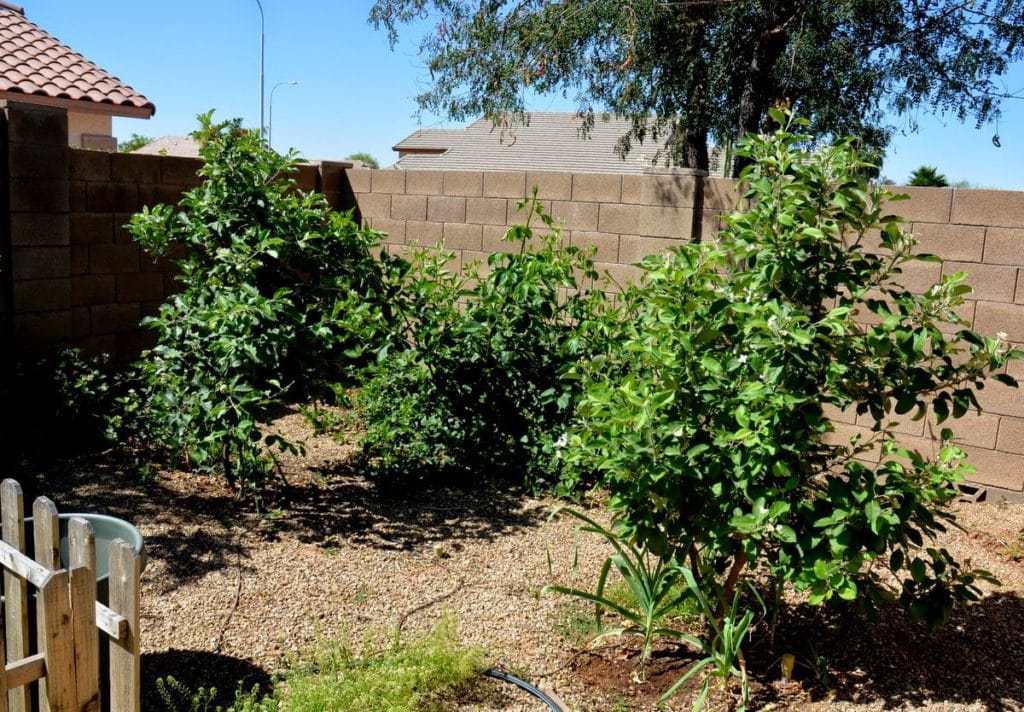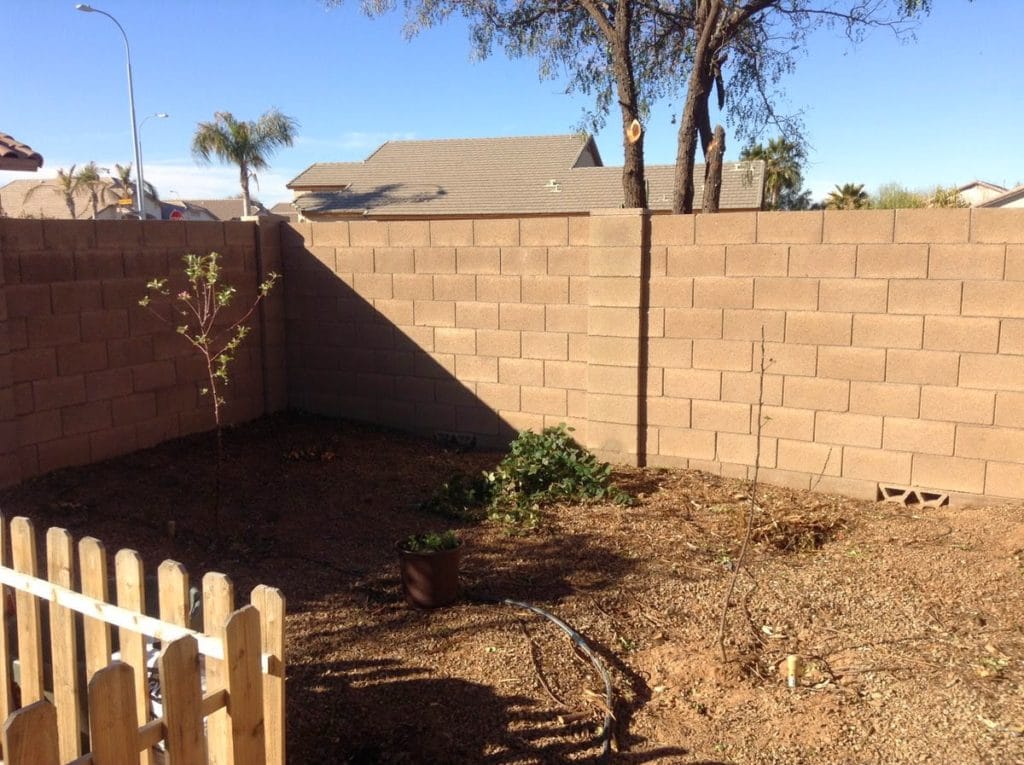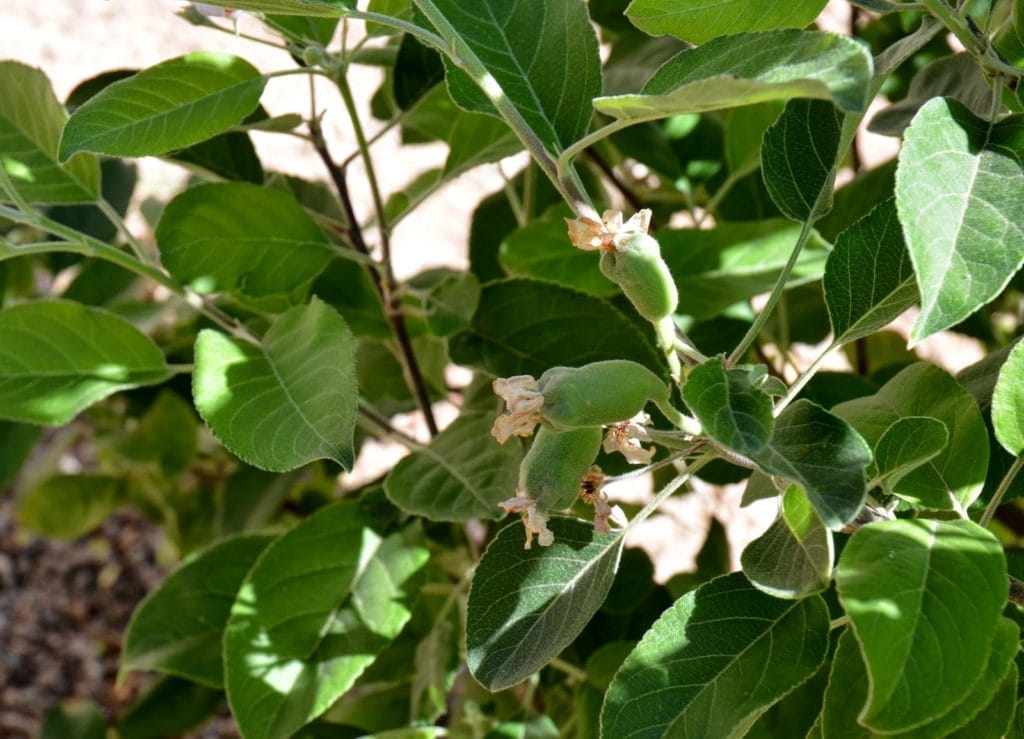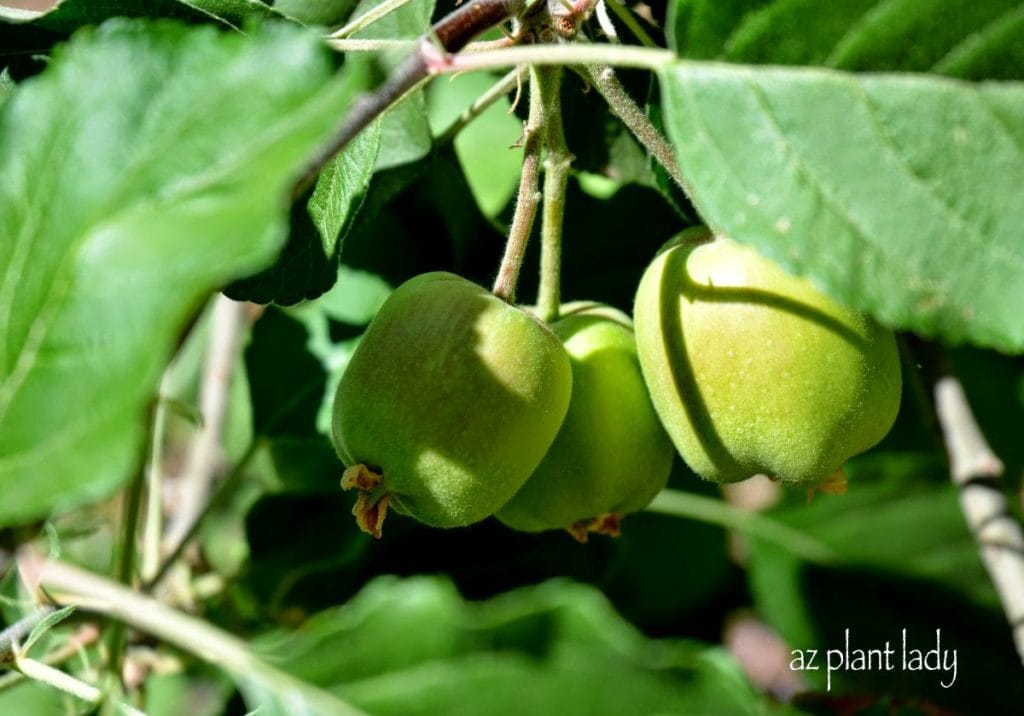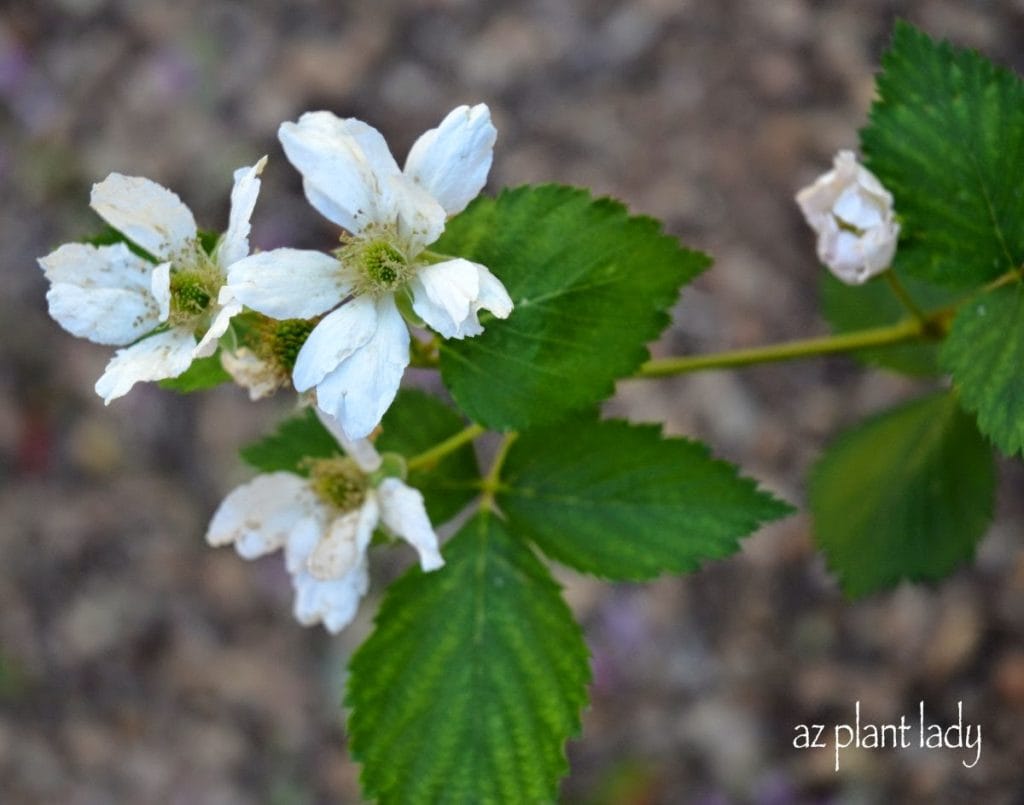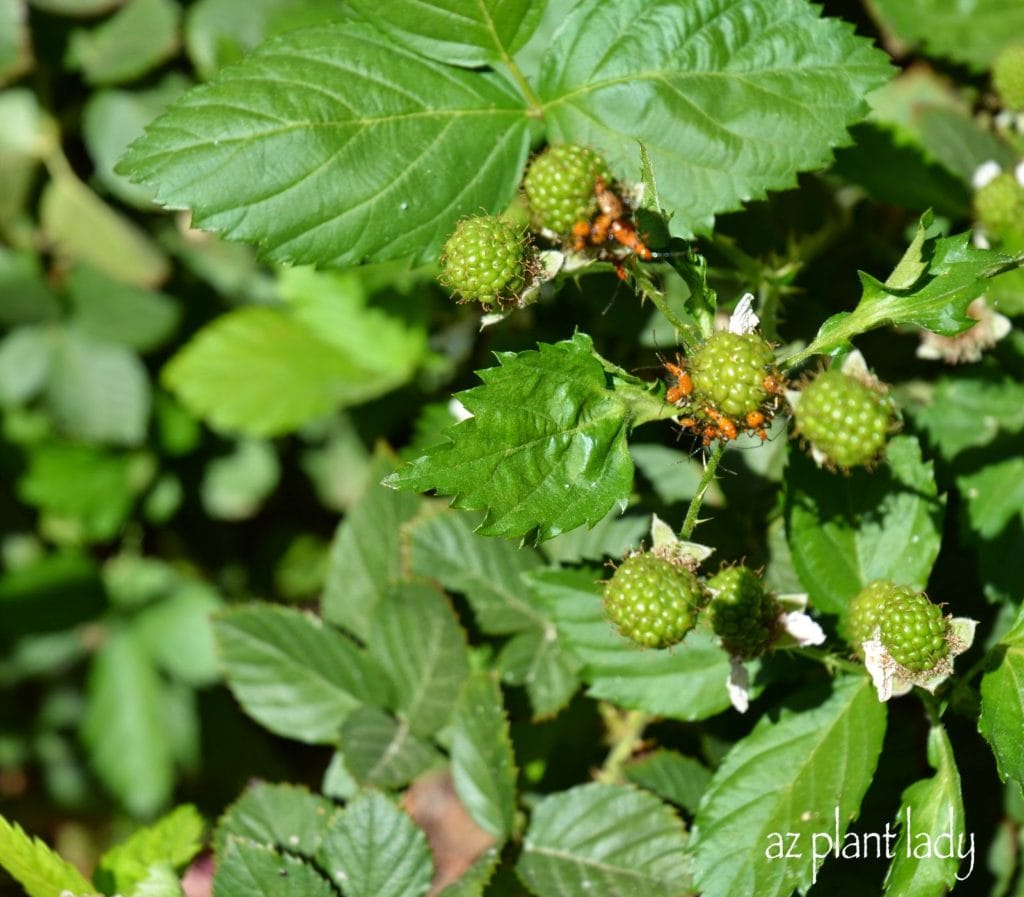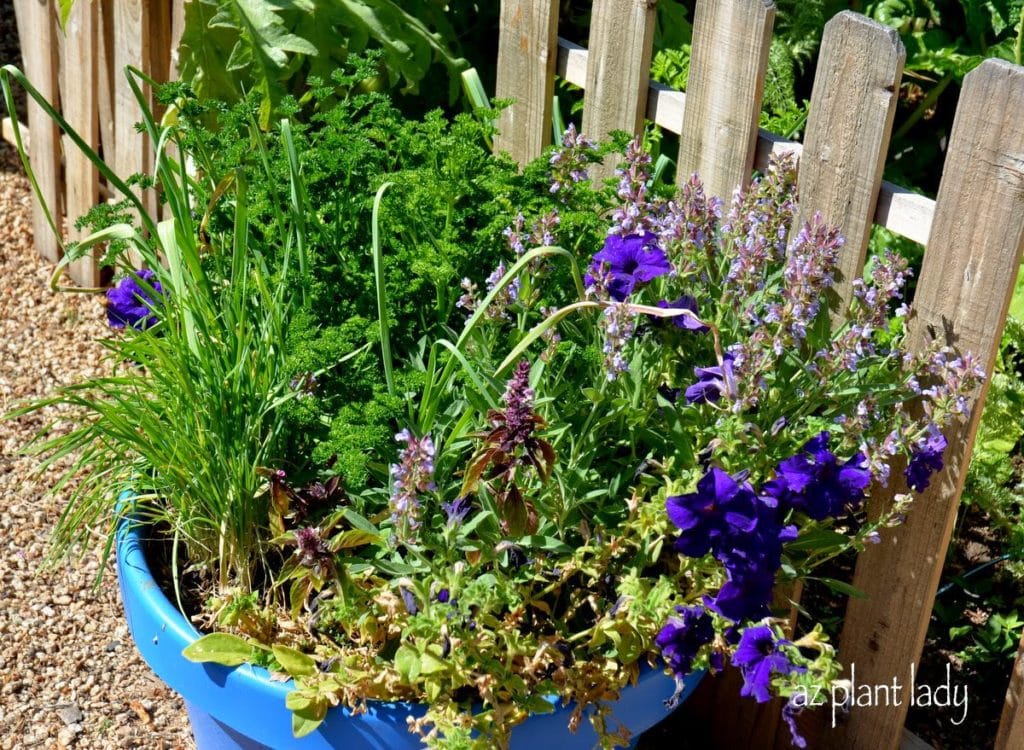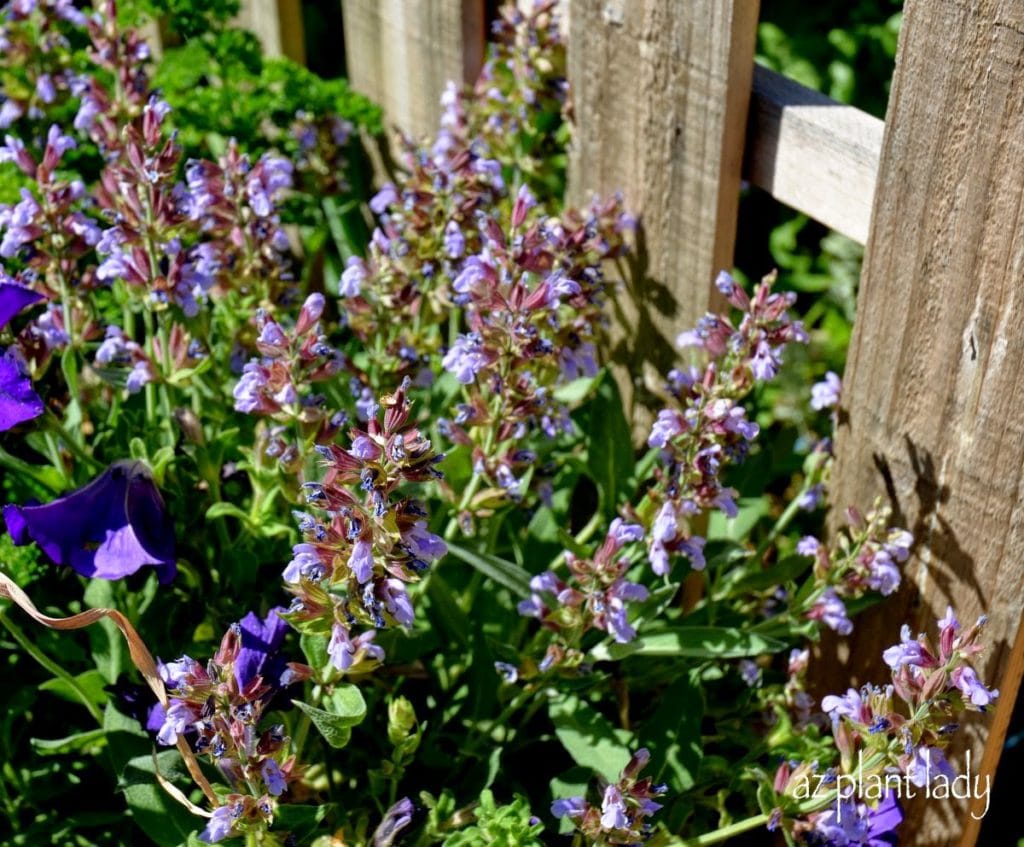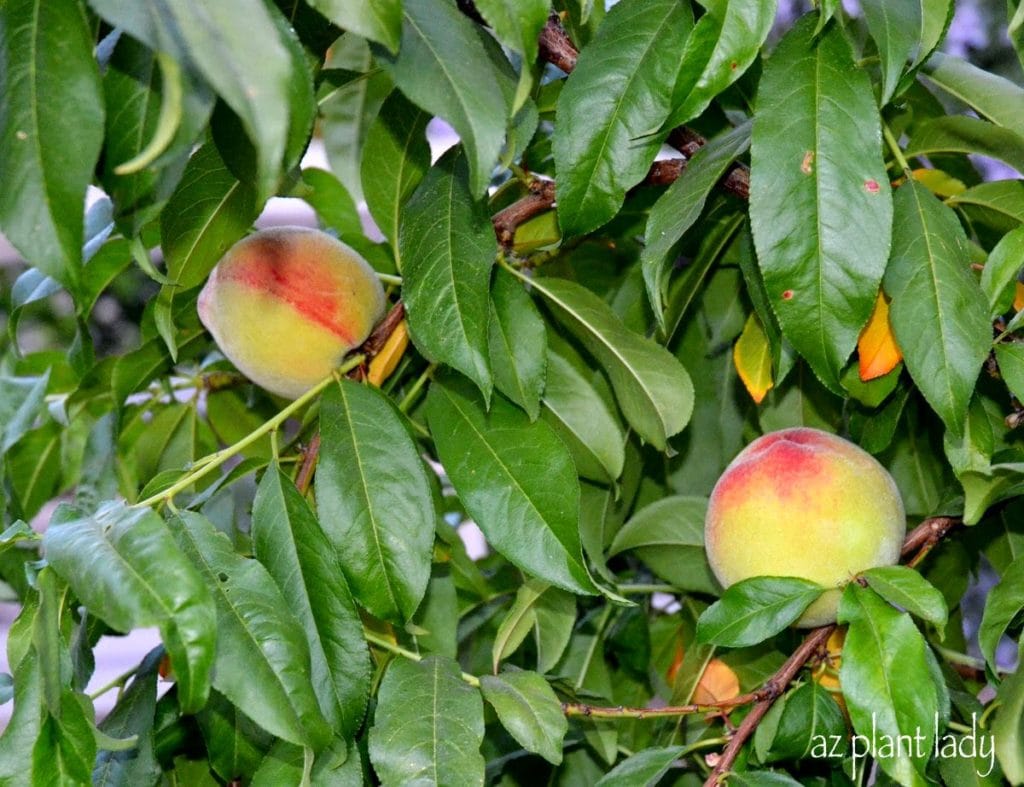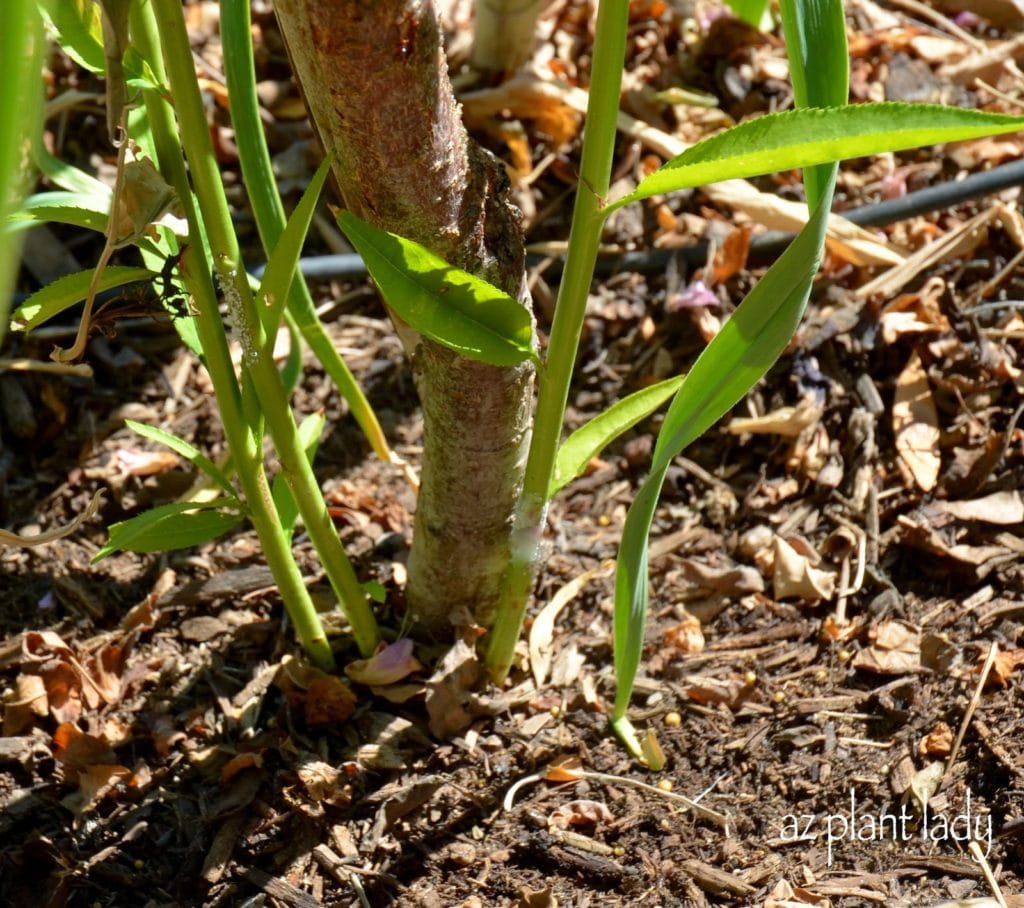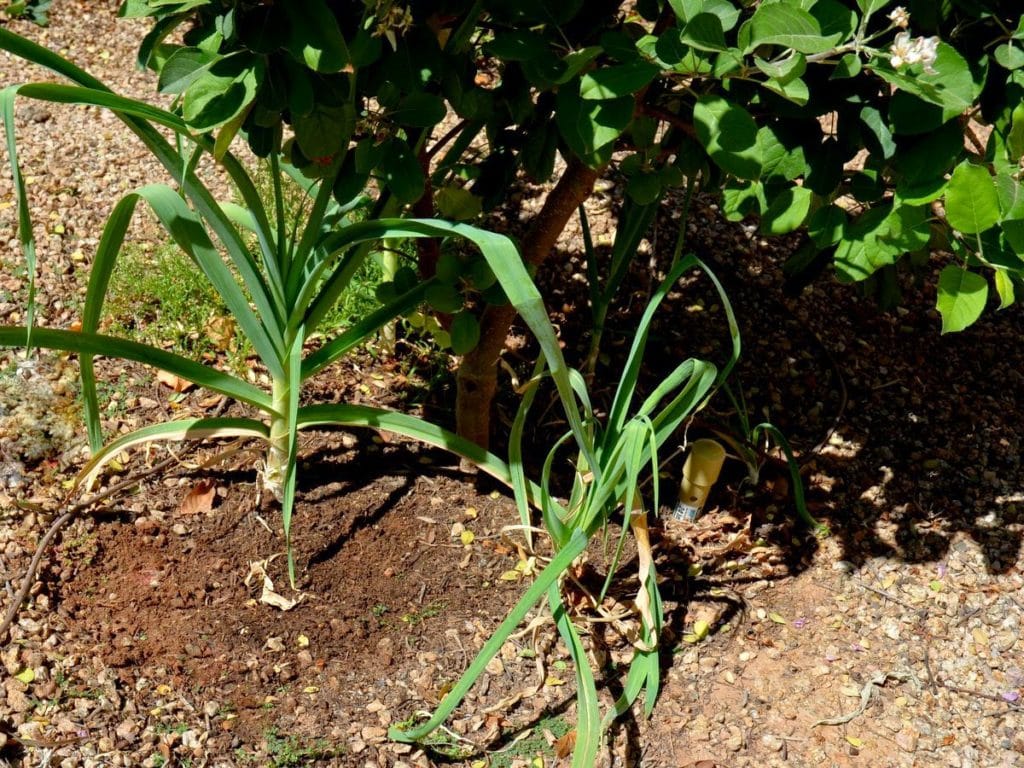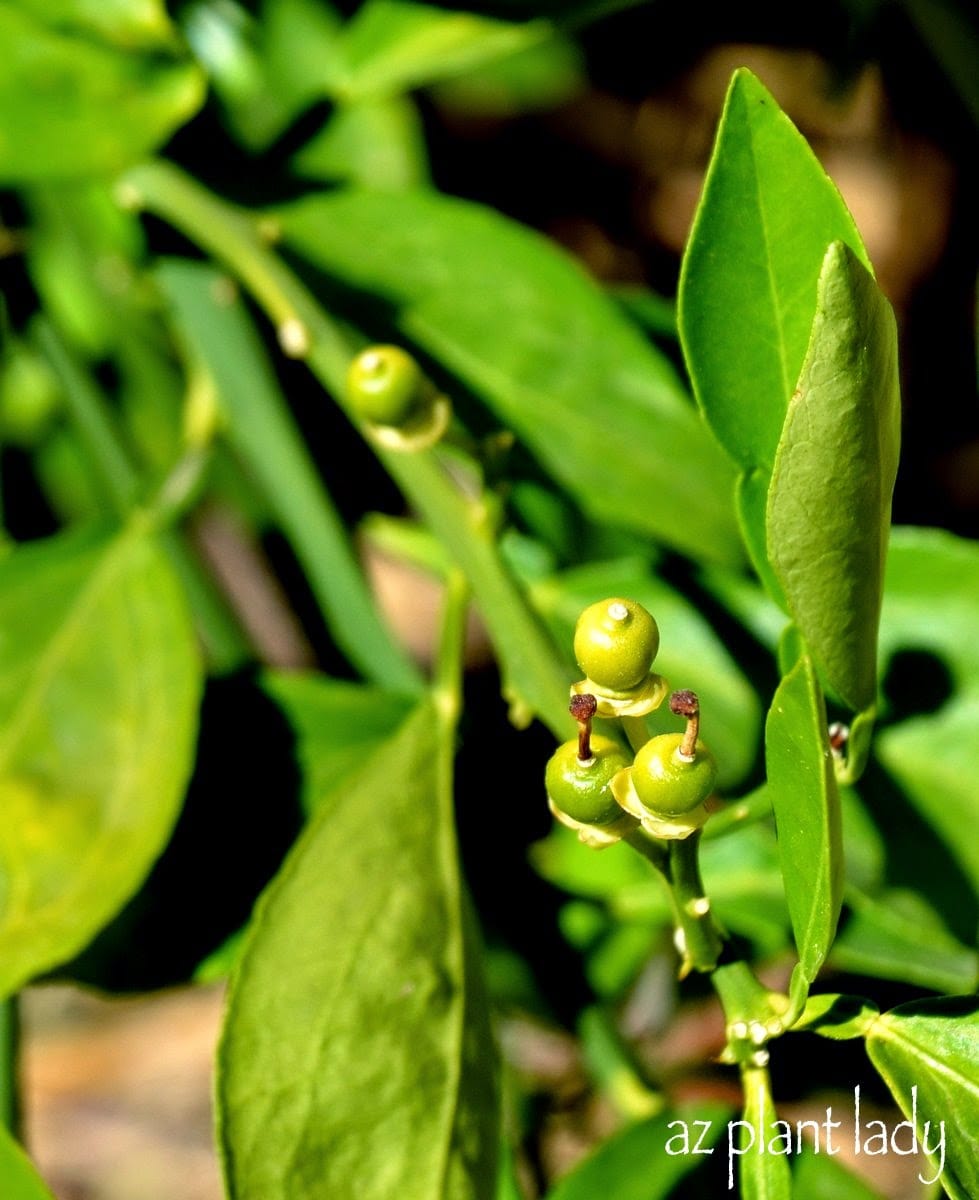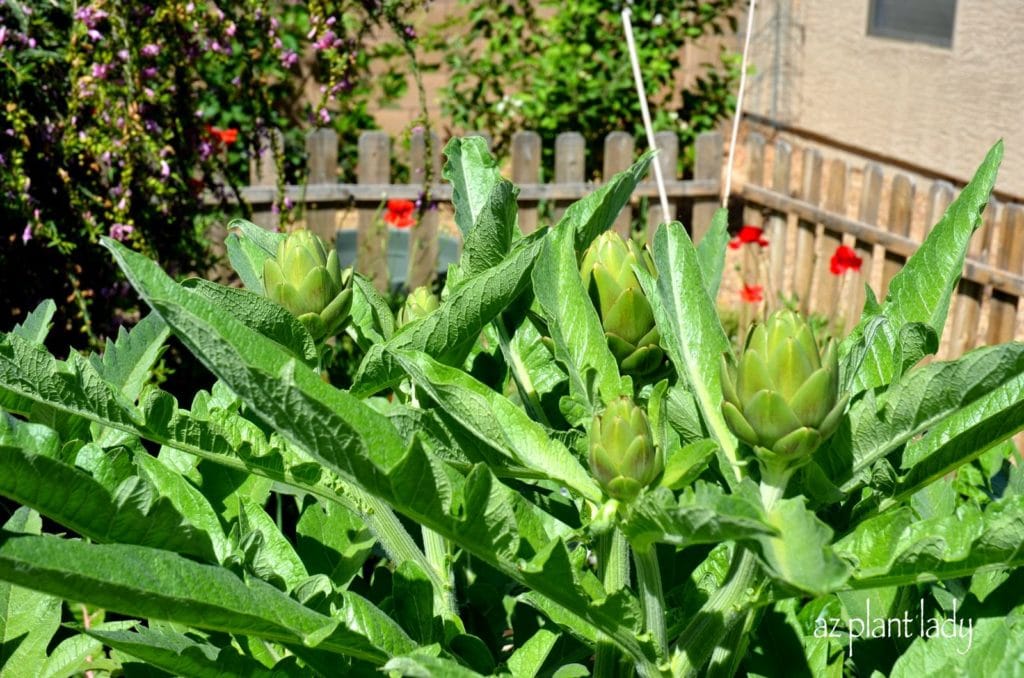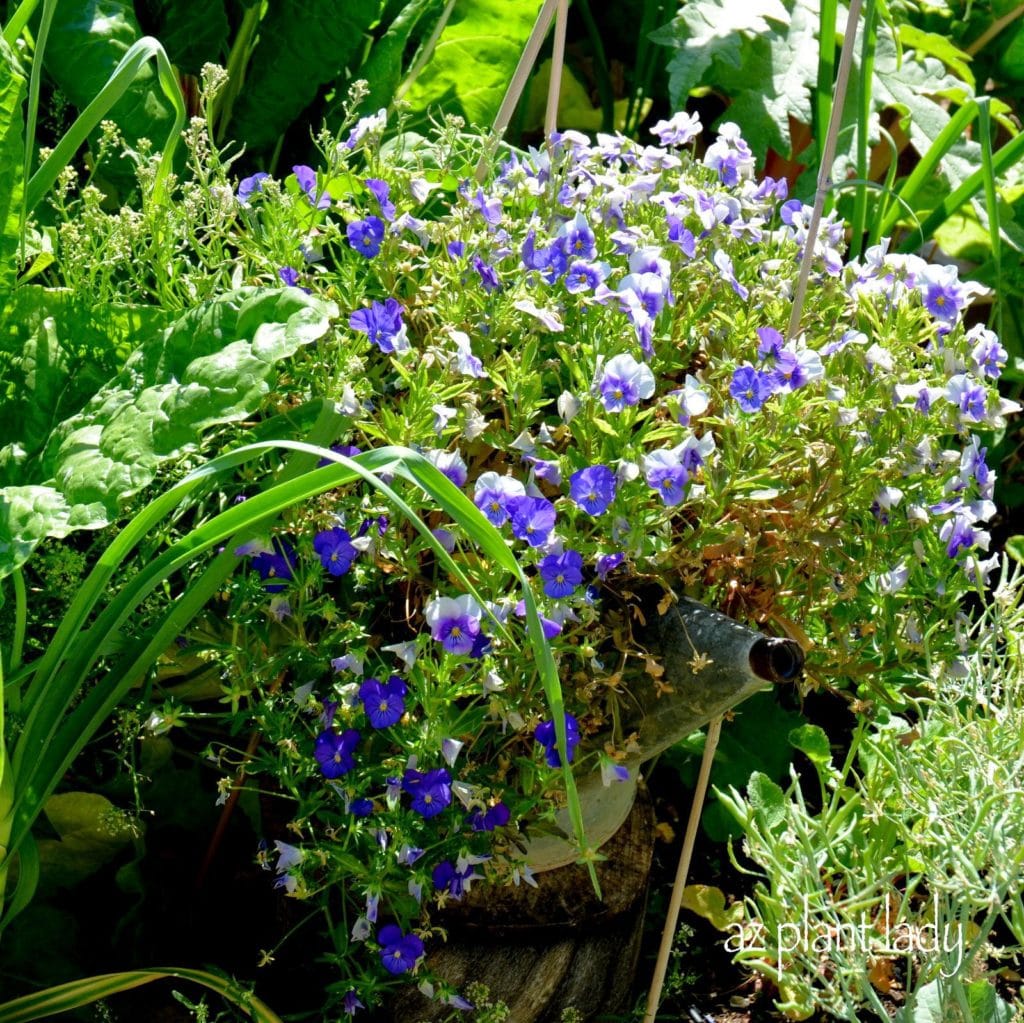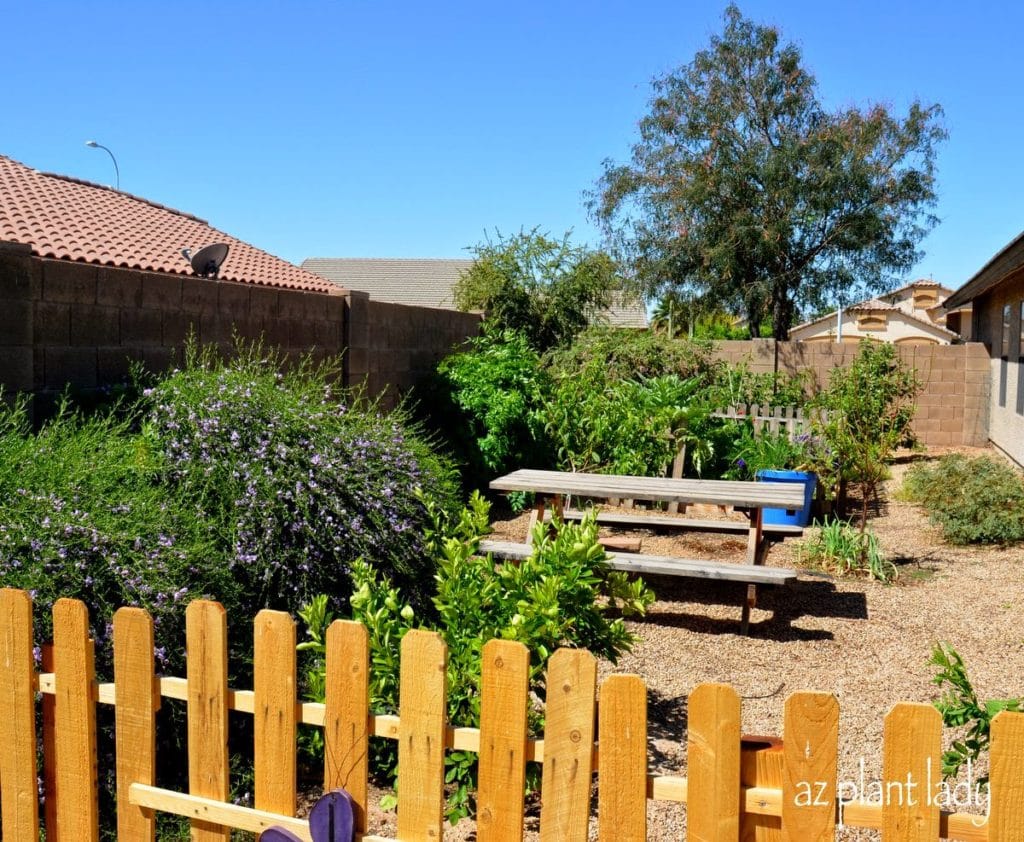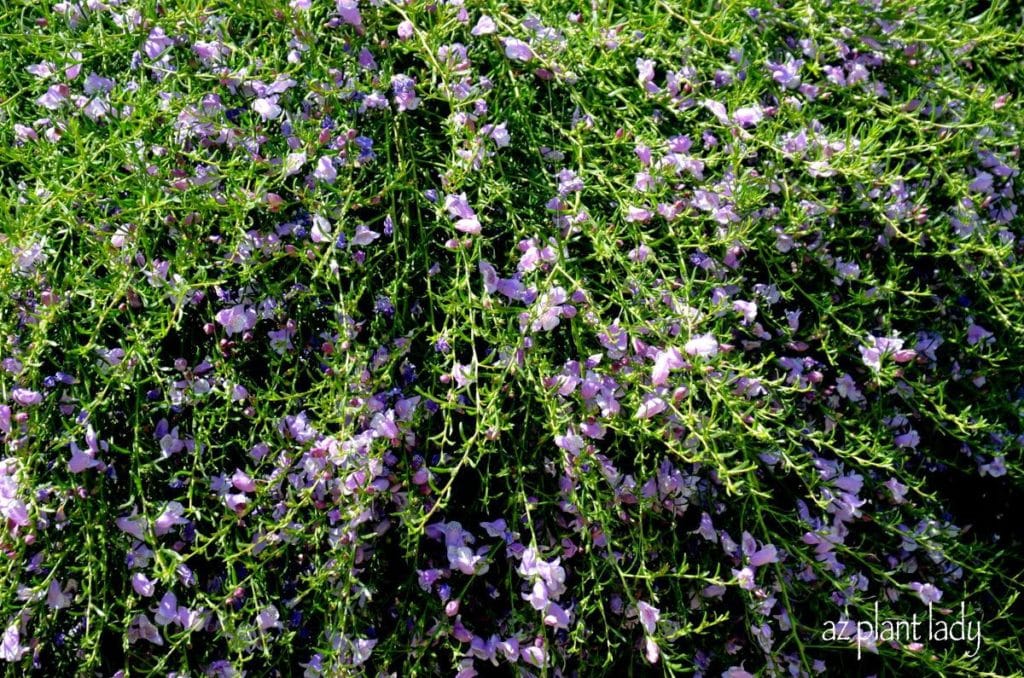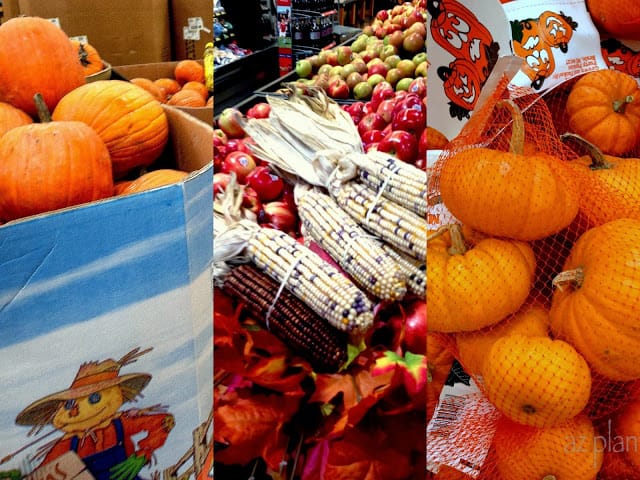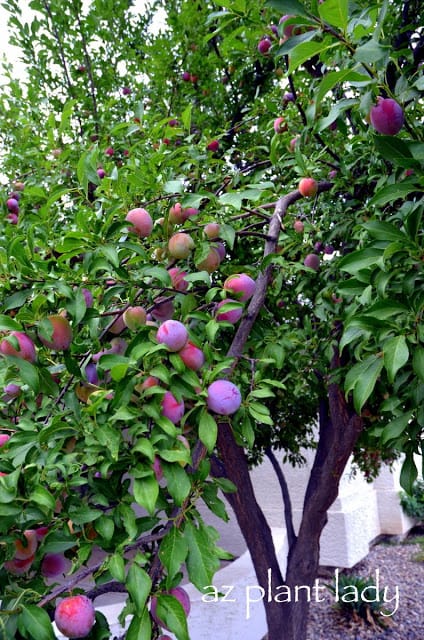Springtime in the garden is my favorite time of year.
Cool-season flowers are still in bloom while summer-bloomers are getting started. The garden is awash in colorful flowers, vegetables, young fruit AND a few bugs and suckers.
I have two areas in my backyard where I grow edible plants. Today, I invite you to take a tour of the largest edible garden, which is located along the side of my house.
Apple trees – April 2014
At the back of the garden, are two apple trees that I planted last year.
They have grown so quickly. This is what they looked like last year…
Newly planted apple trees – February 2013
What a difference!
I’ll admit that this area looks rather barren. There used to be flowering shrubs up along the wall, which we took out in order to plant edible plants.
Usually, you have to wait a few years before you apple trees will produce fruit, so I was very surprised to see small apples forming.
This is what they look like now. The apples will ripen in June and I am all ready to make homemade applesauce, which tastes so much better then store-bought.
I wrote a post about how to make applesauce, which you can view here.
Blackberry flowers
Against the wall, behind the apple trees, are a row of blackberry bushes.
One of my favorite childhood memories are those of the blackberry bushes we had growing in our backyard in Southern California. We would try to pick all we could before our dog would eat them.
Blackberry bushes are surprisingly easy to grow and there are thornless varieties available. Unfortunately, some of my blackberry bushes are not thornless;-)
They are covered with flowers and small fruit. BUT, I also saw something else on my berries…
Orange/black bugs covered a few of my berries.
I hadn’t seen this type of bug before, so I got to work on researching what these were. Turns out they are the juvenile form of stink bugs – not good.
Evidently, they are fairly resistant to organic pesticides. You can pick them off and squish them.
The chives, garlic, parsley, thyme and sage are doing very well in my herb container. However, the purple petunia is beginning to fade due to warming temperatures. So, I will pull it out soon.
Flowering Sage
I don’t add flowers to my herb container during the summer. I usually let my herbs flower, like my basil and sage.
At the same time we planted our apple trees, I also added two peach trees. I was surprised that this tree produced 19 small peaches just months after we planted it last year – that is not normal. I used them along with peaches from my mother’s trees to make peach jam.
This year, the same tree has decided to put it energy into growing just 2 peaches – which is normal. They are huge! I love to look out my kitchen window and see the fruit slowly ripening.
While admiring the peaches on my tree, I noticed something that did NOT make me happy…
Can you see what the problem is? SUCKERS! And I don’t mean the sweet candy that your grandma used to give you.
Fruit trees are grafted onto rootstock and occasionally, the rootstock decides to send up its own branches. They are called ‘suckers’ because the ‘suck’ up the nutrients that would otherwise got to your fruit tree.
To learn how to recognize and get rid of suckers, click here.
Underneath my apple and peach trees, I have garlic growing. Garlic is a very helpful plant. In this case, it helps to repel borers, which are beetles that lay eggs on the bark. After the eggs hatch, the larvae bore their way into the trunk of the tree, often killing it.
Small fruit is beginning to form on my orange tree. Like other fruit trees, it can take a few years before producing substantial amounts of fruit.
Our orange tree has been in the ground for 2 years and we got three oranges last winter. I was so excited that I wrote an entire post about it.
Looking toward the vegetable garden, my artichoke plant is busy. It has 9 small artichokes growing.
I have a confession to make…
I don’t like eating artichokes.
But, the plant itself is very attractive and is often grown as an ornamental because it is a perennial and lives for more then 1 year.
I do have plans for these artichokes though.
– I will cook a few for my husband, who loves them.
– I will dry a few for fall arrangements.
– And, I will allow some to bloom – the flowers are gorgeous!
The purple violas in my rusty, old watering can will soon fade as the heat rises.
I do not plant anything in it during the summer months because it is too hot. The soil temperature in small containers, literally ‘cooks’ the roots of plants. Stick with planting larger pots for the summer and let your smaller containers take a break.
At the beginning of this post, I showed you a picture of my edible, side garden from the opposite side, near the wall.
This is the other view, looking in. Toward the left side, are two ‘Summertime Blue’ Eremophila shrubs.
Can you guess the last time that they were pruned?
3 years ago!
I love these shrubs and their bright-green foliage and purple flowers.
Bell-shaped, lavender flowers appear spring through summer. This is a great ‘fuss-free’ shrub for the garden. It is hardy to 15 degrees and thrives in full sun. A definite must for the southwest garden.
For more information about ‘Summertime Blue’, click here.
************************
Well, that is what is happening in one area of my garden.
I invite you to come back next time, when I will show you my other edible garden, which is in full flower. *I will also share with you the rest of our adventure when we hosted three young girls for the weekend from the Ugandan Orphan’s Choir.
